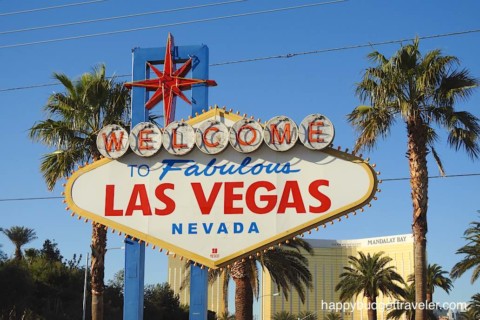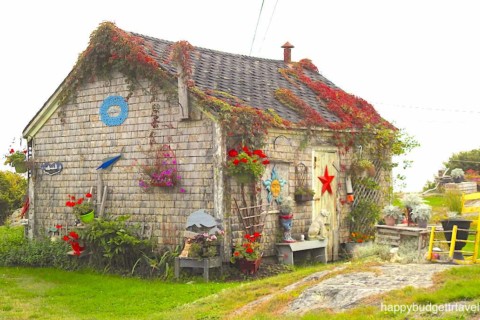RV, Camper Van, Caravan traveling Tips, DO’s, DON’Ts and things to know. Recreational Vehicles are a fabulous way to spend a vacation. There are a few things that you should know about this unique mode of vacationing before you begin. Below, you will find important DO’s, DON’Ts and TIPS about RV’ing in North America. To see pictures, click here.

Minnie Winnie 23′ Winnebago
RV, Camper Van, Caravan Traveling Tips
1. DO’s:
- Pick the right size vehicle as per number of people. A 23 foot RV is usually good for 4 people.
- Rent from companies that have free/included insurance for all valid drivers traveling, there are companies that offer this.
- The outside Awning is an extra, pay the deposit. If you do not damage the Awning, they will return your money. Windscreen Protection is extra insurance, a very low charge but worth it for peace-of-mind.
- Book RV campground parking in advance preferably with Sewage, Power and Water at-least for every 2nd day on the road. With normal regular use, the onboard water tanks/sewage will need to be replenished/drained in two days.
- If equipped, switch Refrigerator to AUTO between Electric and Propane. If not equipped with such a switch, remember to turn Refrigerator to run on Propane when not Hooked up to external Power supply and to switch back to Electricity when Hooked up.
- When parking if you are going to use the stove, shower or sleep, park on level ground as level as possible.
- Make sure you have a Water pressure regulating valve connected to your hose pipe before connecting to your RV water tank input. Not all water sources have regulated pressure and you could damage your piping.
- Make sure you have a 30 amp and 50 amp adapter for your power hook-up as some campgrounds have either or.
- It is good practice to connect Power, Water then Sewage when settling down at a campsite. Remember to turn-off the onboard water pump once hooked up with outside water.
- When emptying onboard tanks, always empty sewage tank first then the onboard grey tank as all the soap/detergent, flushes the discharge pipe clean.
- Remember to turn ON your water pump when traveling so you can have running water on-the-road.
- It is a good idea to carry a GPS, Flashlight and BBQ gas lighter, not all RV’s have one included.
- Carry a portable water filter like BRITA for drinking water while traveling.
- Carry at least two electric extension power bars, they come in handy.
- Make sure you have music on a “memory-stick” or phone as you don’t always get radio reception. Also an RCA stereo cable incase there is no Bluetooth.
- Use disposable plates, cutlery and tumblers as it saves onboard water for other purposes.
- Carry a few small 8″, 12″ 16″ bungee cords to secure stuff in the RV while on the road.
- Carry garbage bags and bin liners.
- Make sure you have RV friendly Toilet paper which dissolves easily and RV toilet PODS to help dissolve waste.
- Have a couple pairs of good rubber gloves for when handling the sewage disposal pipe connections
- Lock and secure all luggage compartments when driving and all doors during the night.
2. DON’TS
- Do not attempt to change a Flat-tire yourself, call for roadside assistance. These are heavy vehicles and need Pros.
- Propane can be filled/topped up only by a gas station attendant.
- DO NOT COOK or use the stove while driving, extremely dangerous.
- Do not leave any of the roof vents open while driving, they could get ripped right off with the wind.
3. TIPS
-
- Try to maintain a quarter tank of gas at all times for peace-of-mind.
- Change your driving habits and accelerate and brake gently. There is NO RUSH, you ARE on vacation.
- Keep good distance between the vehicle in front of you so you have safe reaction time.
- Stuff moves a lot while driving, make sure everything in the vehicle is secured.
- If temporarily parking on slopes, use wheel chocks or wood blocks to prevent rolling.
- Renting Utensil, Pots and Pans is sufficient if done only for 1 person. You get quite a lot of stuff.
- Personal care kits are quite costly and are provided on a per person basis. I recommend you stop at a Walmart or any other store and buy Pillows, microwaveable plate, mug etc.. Carry your own pillow cases, sheets, towels and anything else you think you might need.
- When returning the RV, make sure all sewage tanks are empty as they usually charge you an “emptying” fee which is quite high.
- The onboard Power Generator might never be used as there are many noise restrictions time-wise at campgrounds.
- You may use a portable BBQ at most campsites
4. Pictures
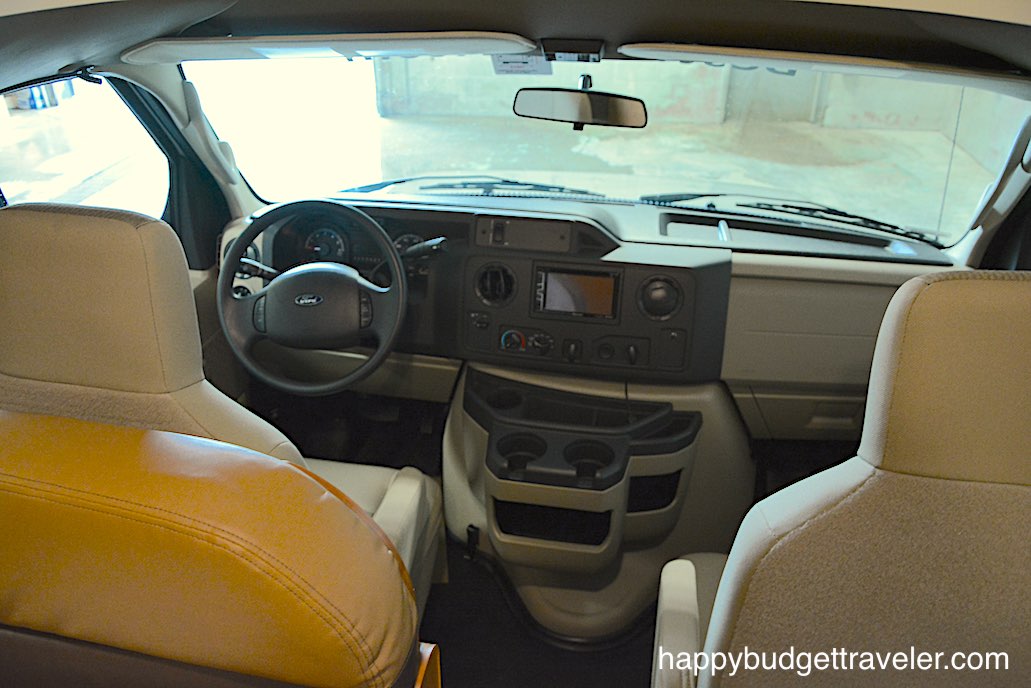
Driver cabin of a Winnebago Minnie Winnie 23′
Above – The Driver’s cab area, as you can see, it is very spacious and quite comfortable.
Below – The Dining area with a forward facing view of the interior. The Table drops down to turn into a Double bed with the left side backrest cushions completing the mattress setup. There is also a Double Bed over the driver’s Cab once you put into place the extra cushion you see there.
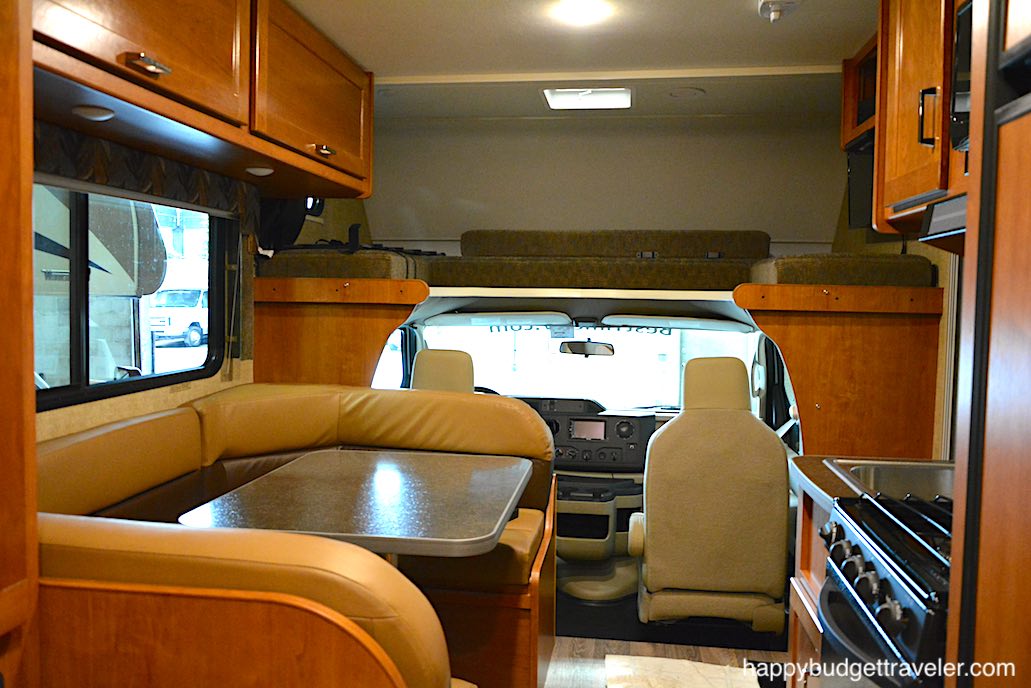
Dining area and forward facing view in a Winnebago Minnie Winnie 23′
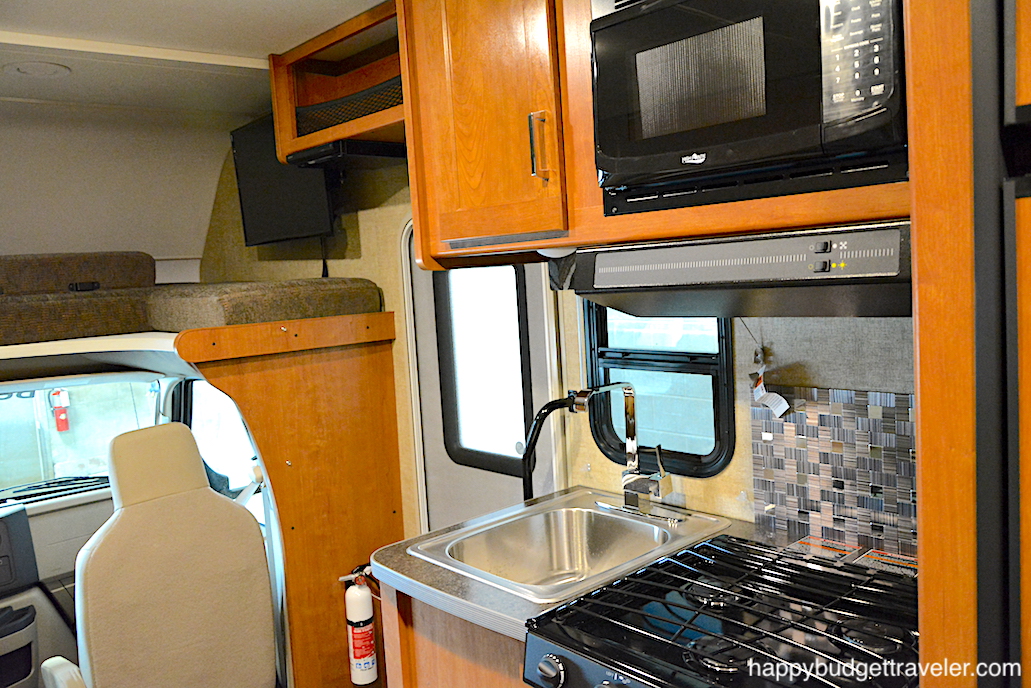
Pantry area in a Winnebago Minnie Winnie 23′
Above – Across from the dining area is the Pantry. 3 burner propane stove, over-stove microwave, sink and entry door to the RV. There is adequate storage for condiments, cooking ingredients, etc.. There is also a 28″ TV, DVD player and a Roof-mounted TV antenna with in-RV remote directional control for TV broadcast searching.
Below – Past the Pantry is a Full-size Refrigerator that works on electricity or Propane so it is always ON. The PANEL besides the Microwave is the Monitoring levels for all water, sewage, Propane quantities available for use and FILL levels of discharge tanks. Above this Panel is the Onboard Power Generator Switch.
Also past the Pantry is the Bedroom and Toilet/Shower.

Interior rear facing view in a Winnebago Minnie Winnie 23′
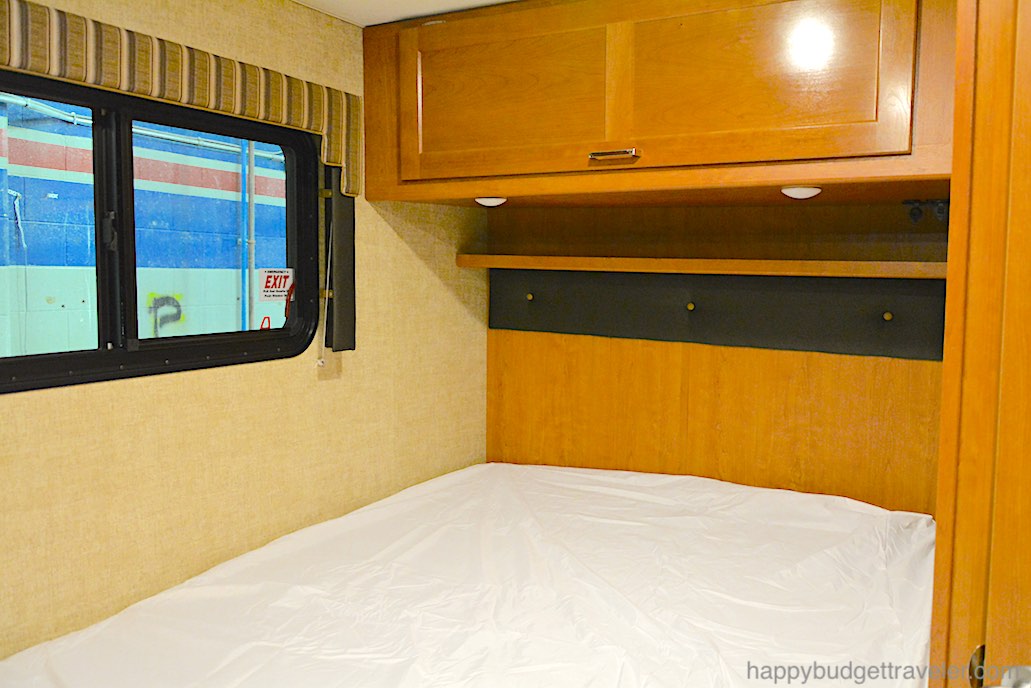
Bedroom in a Winnebago Minnie Winnie 23′
Above – The Bedroom boasts a Queen-sized bed with adequate storage space above it. There are electrical power outlets at the head and the foot of the bed. There are electrical Power outlets also spread out throughout the RV.
Below – Adjacent to the Bedroom is the Washroom comprising of a Toilet, Wash basin and stand-up shower which isn’t too cramped actually. There is a full sized wardrobe just before the washroom door.
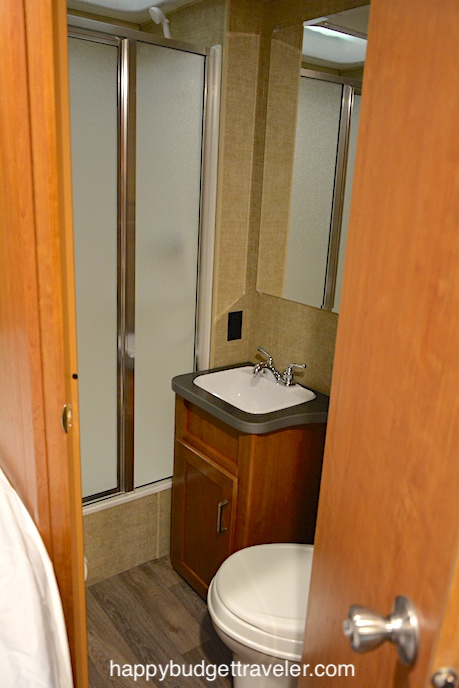
Washroom in a Winnebago Minnie Winnie 23′
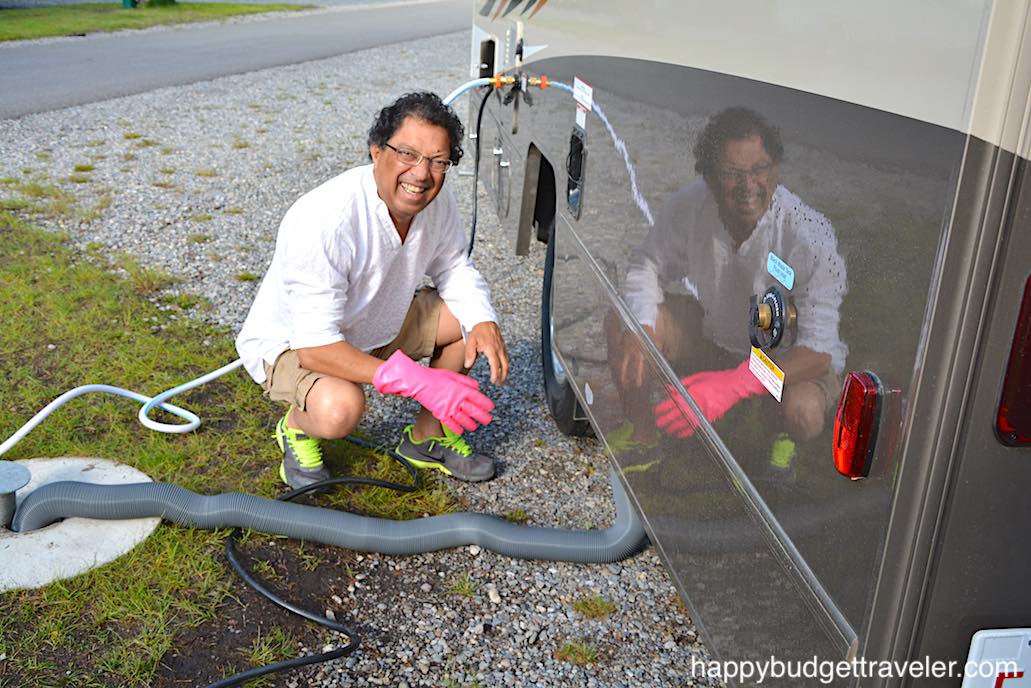
Sewage handling for a Minnie Winnie
Above – Handling the Power, Water and Sewage is pretty simple and you never get “dirty”. After connecting the sewage discharge tube, there are valves to release the flow of waste water and sewage so you never come in contact with them. However, using gloves is definitely recommended. Also always follow the rule of Sewage emptied first then Waste water as all of the soap and detergent in the waste water tank will flush clean the sewage discharge tube. Remember to CAP shut the sewage discharge port.
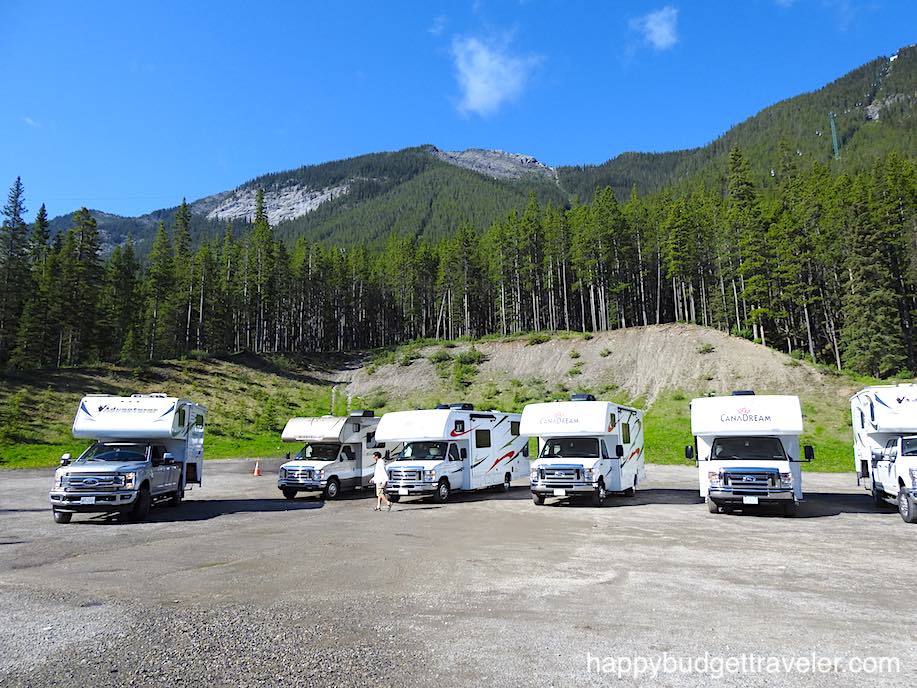
RV’s parking at a Visitor area
Wish you a safe and pleasant journey.



